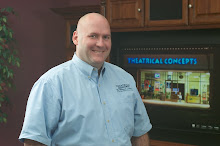From politicians to phone companies, reality-oriented marketing has become the hot new trend that can benefit your business.
Interestingly, back in the 2004 election year, the Republican party’s presidential team created a presidential or “marketing” campaign that went deep into a community, attaching itself to high-profile decision makers, neighborhood leaders and trend-setters to get their message out. The business sector has now harnessed this marketing strategy.
The phone industry, can we say AT & T, created local marketing teams that went deep into communities to find neighborhood leaders to pitch its newest service. The telecommunications giant developed lists within the communities that included Sunday School teachers, “influencers”, trend setters and others whose opinions are sought out and valued by neighbors and peers. This strong word-of-mouth influence has helped AT&T find customers that have agreed to sign up for their TV service after the influencer’s hosted TV parties.
Jaguar is capitalizing on a marketing trend that is referred to as a “living product placement.” The luxury car maker is using high-profile trend setters to drive around in their car and hope to be “seen” in it. Just ask any perfume, cosmetics, handbag maker or fashion house how important it is for them to find a celebrity (based on high-profile) to wear their product in public.
Let’s look at this marketing trend a little closer:
* First, companies are going deep into a local community to find the decision-makers and trend setters who others value and respect for information from presidents to commercial lifestyle brands, i.e. Jaguars, host TV parties, women’s fashions, etc.
* As the major television networks lose market share and viewers to cable channels and Internet programming, companies that would normally advertise on these channels are looking for ways to tap local markets to find their customers.
* Network marketing businesses have understood the importance of reality-oriented marketing by inviting friends, neighbors, family and business associates to their homes to try cookware, make-up, necessary home products, health supplements and the list goes on.
* Banks are using real customers in advertisements, on billboards and on television to share the benefits of using this specific bank and services in their everyday business.
* The Wall Street Journal, car companies and others are highlighting their customer with real names and photos with the benefits of using their products and services.
* Businesses are bringing in their customers to taste foods prepared by local chefs (Think: kitchen appliance centers, supermarkets, culinary sections of bookstores, wine stores, and confectioner’s businesses to name a few).
Why do People Buy?
What makes marketing deep within a community with focused placements and living product placements appealing to your clients and buyers? Certainly there are several reasons that people buy a product or service, but a few of these reasons or benefits are:
* People are always looking for something new, slightly different. One of the most powerful words you can use in your marketing campaigns is the word “new.”
* People want to look hip, young, cutting-edge, and want to keep up with the current lifestyle. The 20-somethings to 60-somethings look and act at least a decade younger.
Psychographics
Certain eras and generations feed and are motivated by the current political, economic and social changes they perceive happening around them at certain stages in their lives. This is a major component of generational marketing and it needs to be an important piece in your marketing campaigns. You need to know who your best customers and clients are by way of their demographics and psychographics.
The advertising campaign that Dove used in capturing “real women” of all sizes, careers and cultures was a hit. There seems to be a duplicity however, in marketing campaigns today, just as there is a polarizing effect from the retail world in that consumers are buying products and services from the two extremes: the discounters or the prestigious, expensive lines. This too is happening in advertising and marketing; Celebrity-based reality advertising and Real People-based reality advertising.
* Celebrity-based reality advertising - Marketers use celebrities more commonly now than models. We can’t seem to get enough information about celebrities as People Magazine is one of the top magazine attractors nationally.
* Real People-based reality advertising - Marketers are increasingly using “real, everyday people” who are perceived as a center of influence, from neighborhoods to office workers as well as those who are perceived as beautiful and as trendsetters, to influence buyers to purchase their products and services.
Then there’s http://www.youtube.com which I believe is in its infancy stage where ebay was several years ago! This website has become a gathering place for people to “show” videos of all types and much more. How can you showcase your business (services or products) in this new and very visible media?
Marketing Tips:
* Find ways to “show and tell” your clients and customers the benefits of using your products.
* Find the “influencers” in a group or a demographic/psychographic segment.
* Allow your customer to use their own “benefit” words and phrases which are usually much stronger and “real” to others when creating advertising copy AND creating a marketing campaign.
* Think globally when creating your marketing campaign. For example, one company uses the word “excellent” in seven different languages to define their products.
* Think locally as well, focus on going “deep” within a community in a particular well-defined segment(s).
* Think of ways you can entice your prospects and clients to “try” your services or products before purchasing?
Ruth Klein

No comments:
Post a Comment